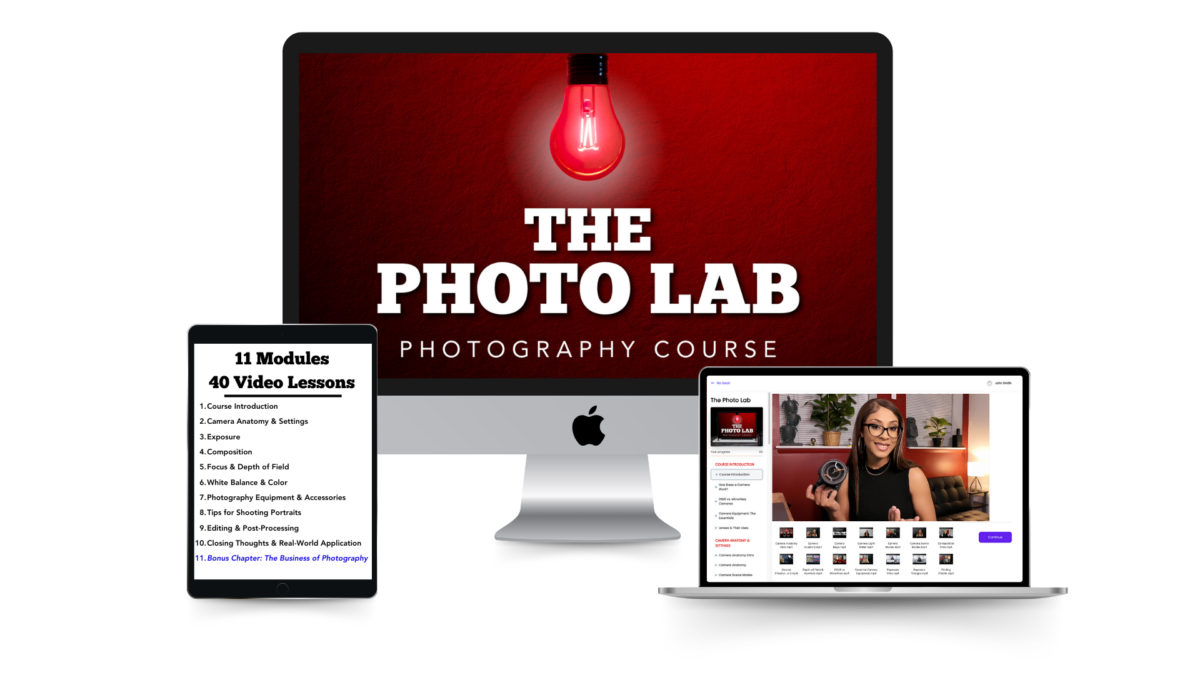Professional Photographer Tips to Get Your First Booking
Are you passionate about photography?
Do you feel ready to make that switch from doing photography as a hobby to doing paid professional photography?
Then it just might be your calling!
Photography is more than just snapping pictures—it’s an art form that requires skill, creativity, and dedication.
You can turn your love for photography into a rewarding career as a professional photographer. This path allows you to express yourself while making an income from your creativity and storytelling abilities.
From weddings and families to headshots and editorial photos, there’s a niche for every interest.
So, let’s go over what it takes to turn your passion for photography into your profession.
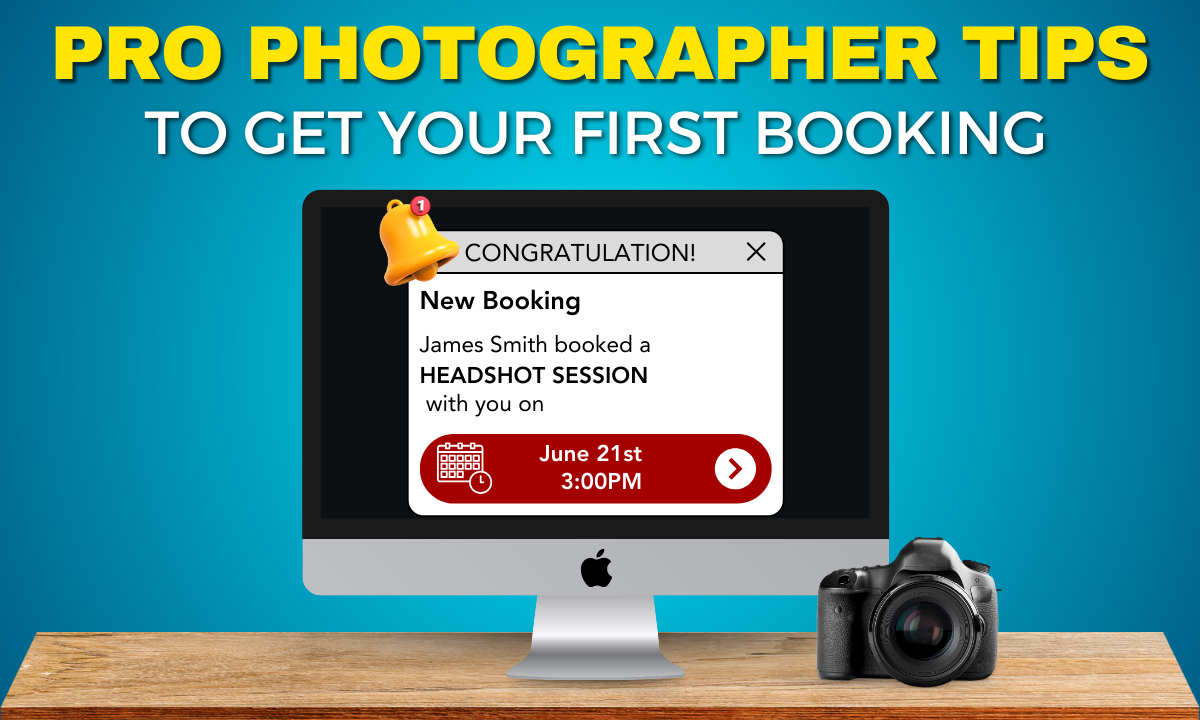
How to Jumpstart Your Photography Career
Starting a career in photography takes skill, creativity, and hard work.
You’ll need to learn, build your portfolio, and connect with other photographers in the field.
Education and Training
You don’t need a formal degree to become a photographer. Many paths can lead to success.
To learn the basics, you could take online courses or attend workshops. Look for classes on lighting, composition, and editing software.
Some photographers choose to get a Bachelor of Fine Arts. This can give you a strong foundation in art and design. It may also help you stand out to potential clients.
You should also consider finding a mentor.
An experienced photographer can guide you and share valuable insights. They might even let you assist on shoots to gain hands-on experience.
This is also a great way to learn how other photographers run their businesses.
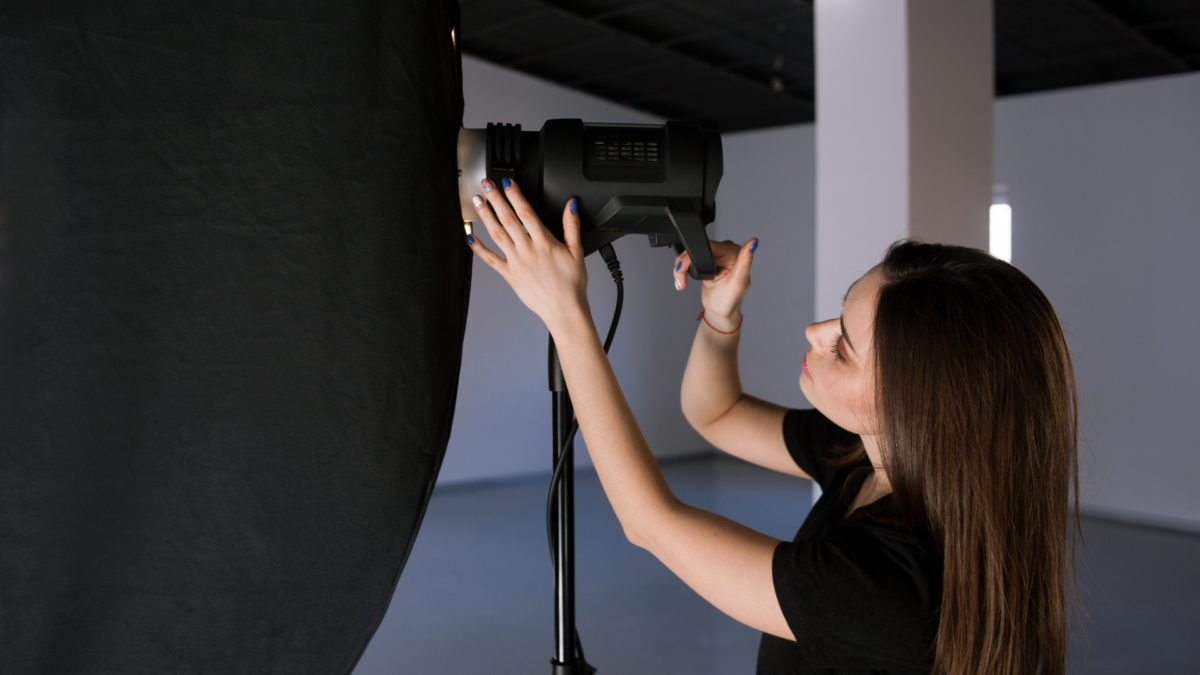
Build a Strong Portfolio to Get Photo Shoot Bookings
Your portfolio will be the thing that sets you apart from every other photographer. It shows off your best work and style.
Start by taking lots of photos. Practice different types of photography to find your niche.
Once you’ve found your niche and style, stick to doing just that.
People would much rather hire a specialist than a jack-of-all-trades. When building your portfolio, add only your best work and make sure each image is high-quality and well-edited.
Then… create an online portfolio website.
This makes it easy for potential clients to see your work. And update it regularly with your latest and greatest photos.
Networking and Community Engagement
Meeting other photographers and industry pros is one of the most important parts of building a photography career.
To connect with other photographers, join local photography groups or clubs, and attend photo walks or meetups.
I used to host photo walks for local photographers in Hartford, Connecticut. I even created my own ongoing photography networking event, “The Photoshoot Kickback,” so I could meet more local photographers.
Social media is also a great tool for networking.
Share your work on platforms like Instagram, Facebook, Threads, or LinkedIn. These are great places to follow and engage with other photographers and potential clients.
You can also volunteer your skills for local events or charities. This can help you gain experience and make connections, and it’s a great way to give back to your community.
Developing Your Photography Skills
Nothing is more important than thoroughly knowing your camera and the basics of photography.
Once you’ve mastered the fundamentals, you’ll continue learning to improve your photography skills. You’ll need to learn technical aspects, train your artistic eye, and put in lots of practice.
If you’re interested in doing so in a convenient and easy way, check out my photography video course, “The Photo Lab.”
Mastering Camera Settings
Get to know your camera inside and out.
Learn how shutter speed, aperture, and ISO work together to control exposure. Play with different settings to see how they affect your photos.
Start in auto mode, then slowly switch to manual as you get more comfortable. Try adjusting one setting at a time to understand its impact.
Don’t be afraid to make mistakes—they’re part of the learning process.
Take notes on which settings work best in different situations. This will help you react quickly during a photoshoot.
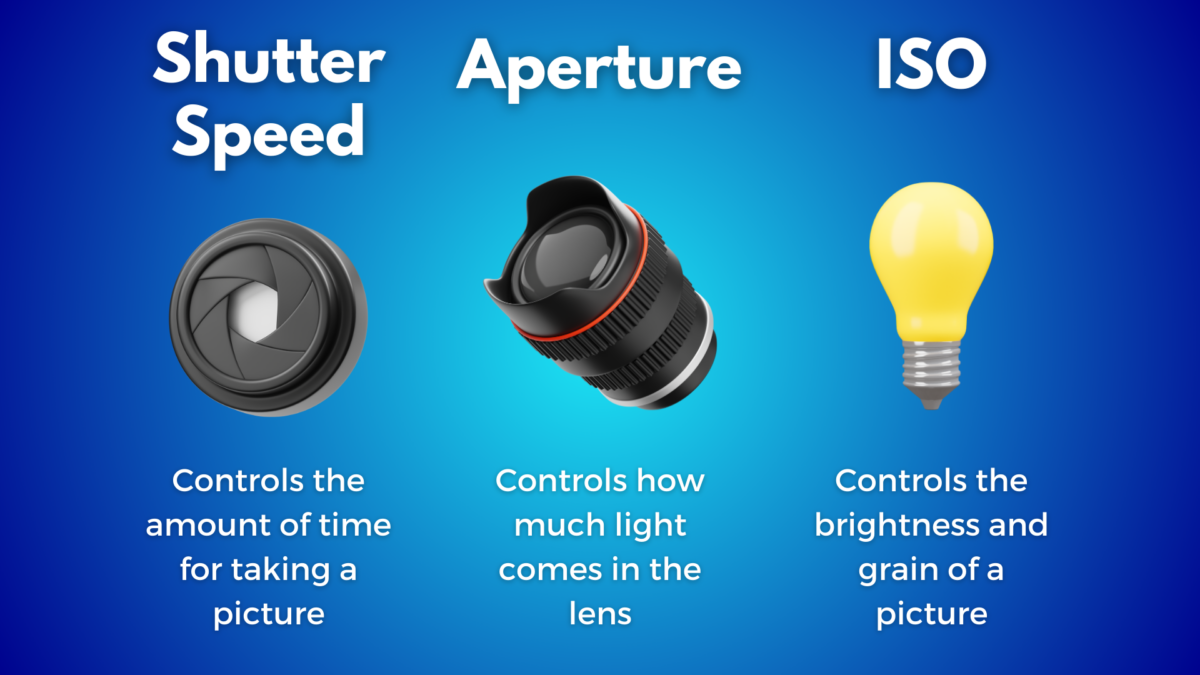
Composition and Lighting Techniques
Good composition can turn an ordinary scene into a striking image.
Learn basic rules like the rule of thirds, leading lines, and framing. But don’t be afraid to break these rules once you understand them.
Lighting is also key to great photos.
Notice how light changes throughout the day. Golden hour (just after sunrise or before sunset) often produces beautiful, warm light.
On cloudy days, you’ll get soft, even lighting that’s great for portraits.
Try different angles and perspectives.
I recommend getting low to the ground or climbing up high for unique views. Move around your subject to find the most flattering light.
Continual Practice and Experimentation
The more you shoot, the better you’ll get. Try to take photos every day, even if it’s just with your phone.
You could do personal challenges, like only using one lens for a week or focusing on a specific color.
Reach out to Instagram models who live in your area and are willing to shoot with you. Many of them are looking to build their portfolios, just like photographers.
Plus, it’s always good to have more connections in the industry.
I know taking these photos or work isn’t paid.
But if you want clients to book you, they need to see examples of your work, and you need to show you’re an active practicing photographer.

Also, don’t be afraid to look at other photographers’ work for inspiration and try to imitate specific elements like lighting, colors, lens types, editing styles, etc.
Experiment with new techniques and genres.
If you usually shoot landscapes, try portraits. If you prefer color, try black and white. Push yourself out of your comfort zone to keep learning and growing as a photographer.
The Business Side of Photography
Running a photography business involves more than just taking great pictures.
It requires business skills, marketing know-how, financial savvy, and lots of patience.
Starting Your Own Photography Business
Launching your photography business starts with creating a solid plan.
Pick a niche that fits your skills and interests. This could be weddings, portraits, or commercial work. Next, set up a legal business structure like an LLC.
Get the right gear and software for your chosen field. And once again, don’t forget the importance of building a portfolio that showcases your best work. This will help you attract clients.
Then tell anybody and everybody about your photography business!
Start with your phone contacts list and Facebook friends. Then, I will look for new potential clients by joining local business groups and photography associations. These connections can lead to valuable partnerships and job opportunities.
Note: Don’t expect many of your friends, family, or local community to go out of their way to book you.
Yes, they’ll want to support you, but maybe they’re not into having their photos taken. Do the work and market beyond your local area.
Effective Marketing and Self-Promotion
Your online presence is extremely important as a business owner.
You always want to be “findable” online. Create a professional website to display your work. Use social media platforms like Instagram and Facebook to reach potential clients.
Word-of-mouth is powerful in photography. Ask happy clients for reviews and referrals. Consider offering a referral discount to encourage this.
You should also collaborate with other businesses in your area. For example, team up with wedding planners if you do wedding photography. This can lead to more bookings.
Old-school marketing techniques still work.
To get your name out there, try local advertising in community papers or sponsoring events.
Managing Your Finances and Setting Prices
Setting the right prices is tricky but important. Research what other photographers in your area charge. Factor in your costs, time, and skill level when deciding your rates.
Track all your business expenses.
This includes gear, software, travel, and marketing costs. Keep good records for tax purposes. Accounting software like Quickbooks and FreshBooks are great at helping do this.
Also, consider offering package deals to attract more clients. For example, a wedding package might include engagement photos.
Remember to save money for slow periods and equipment upgrades. Business won’t always be “booming.” Photography gear can be expensive, so plan ahead for these big purchases.
And finally, look into business insurance to protect yourself and your equipment.
This can save you money in the long run if something goes wrong. For example, someone could break into your studio and steal your equipment, and accidents, bad weather, and unforeseen situations happen.
Finding Your Unique Style as a Photographer
Developing your own photographic style will set you apart. It helps clients recognize your work and attracts those who connect with the skills and value you have to offer.
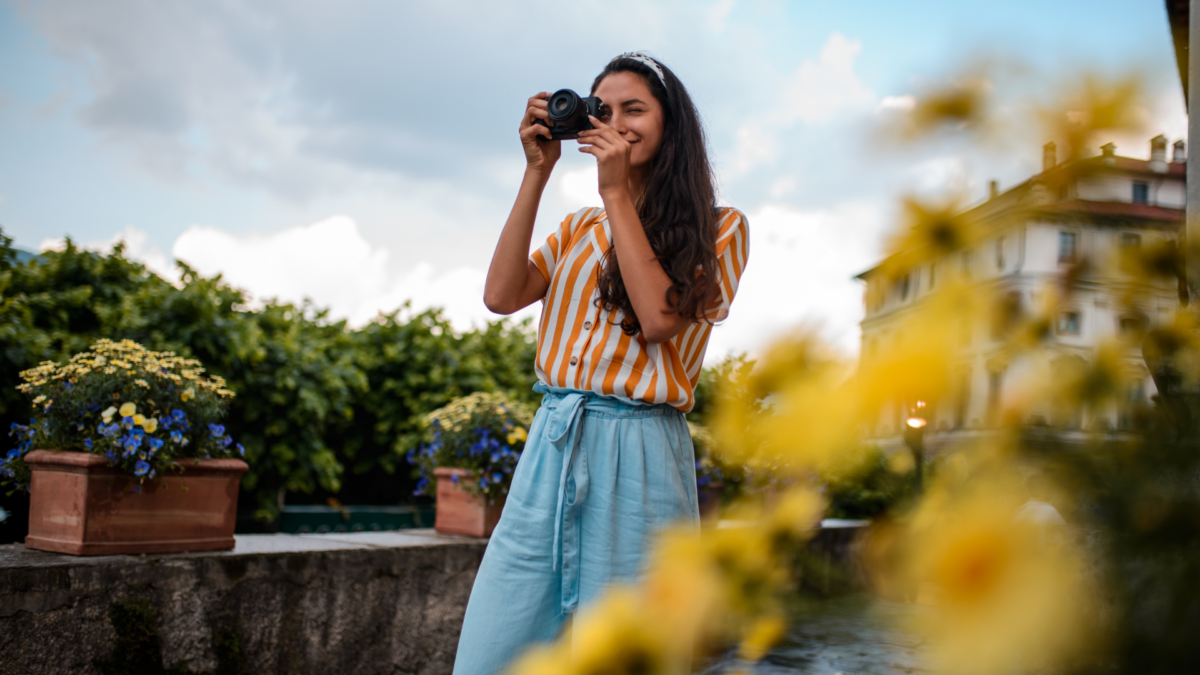
Discovering Your Niche
What subjects make you excited to pick up your camera? What are you passionate about outside of photography? What do you stand for in this world?
Pay attention to the themes that keep appearing in your photos.
Maybe you’re a sneakerhead. You could do product photography of sneakers in-studio or combine it with your street photography.
Keep an inspiration folder of images that speak to you. Look for patterns in the styles, subjects, or moods you’re drawn to. This can reveal your natural interests and strengths.
You should also develop a signature post-processing editing style. You want to be known and recognized for something.
Create a Distinct Brand Identity to Book Photo Gigs
Your brand is more than just a logo and pretty colors.
It’s the feeling people get when they see your work. Think about the emotions you want your photos to evoke.
Choose a consistent editing style that matches your vision. This could mean bright and airy images or moody, dramatic shots. Stick with it across your portfolio and social media.
Pick colors, fonts, and design elements that reflect your style. Use them on your website, business cards, and packaging. This visual consistency helps make your brand memorable.
Personal Projects and Creative Expression
Personal projects let you explore ideas without client pressures. They’re a chance to push boundaries and try new techniques. Set aside time regularly for these creative pursuits.
Document your process and share it online. This will give followers a peek behind the scenes and help them connect with your work on a deeper level.
Use these projects to refine your style and generate fresh ideas for client work. They can also attract new clients who resonate with your personal vision.
Don’t worry if your early attempts feel awkward. Keep experimenting and you’ll find your style in time.
More Tips to Expand Your Professional Network as a Photographer
Building connections with other photographers and industry professionals can boost your career. It opens doors to new opportunities and helps you grow your skills.

Use Social Media
Social media is the ultimate way to connect with other photographers.
Share your best work on Instagram and Facebook. Follow and engage with other photographers you admire and comment on their posts.
LinkedIn is useful for making professional contacts. Create a profile that shows off your skills and experience. Connect with other photographers, as well as people who might need your services.
Use hashtags to make your posts easier to find. And engage with others using these tags to grow your network.
Join Professional Associations
Becoming a member of a photography association can help you meet other pros. The Professional Photographers of America (PPA) is a big one.
They offer workshops, events, and online forums. If you can’t afford to join, though, you don’t need to.
Local photography clubs are another good option. These groups often have meetings where you can learn new skills and meet people. They might also organize photo walks or contests.
Look for trade associations in your area of expertise. If you do wedding photography, join a wedding industry group. This can help you meet planners and other vendors.
Collaborating with Other Professionals
Working with other photographers is a great way to learn and grow your network.
Offer to assist on shoots or ask if you can shadow more experienced pros. This hands-on experience is invaluable.
Team up with other creatives, such as makeup artists or stylists. You can create cool projects together and tap into each other’s networks, which might lead to new clients or job opportunities.
Consider partnering with local businesses. Offer to take photos for their website or social media. This can help you meet potential clients and grow your portfolio at the same time.
Understanding the Technical Aspects That Make Up Photography
Photography involves a mix of artistic vision and technical know-how. Learning the basics of photography will help you take better pictures and grow as a photographer.
Choosing the Right Equipment
Your camera is just the start.
You’ll need lenses that fit your style. Wide-angle lenses are great for landscapes, while telephotos work well for wildlife. Don’t forget a sturdy tripod for sharp shots in low light.
Think about lighting, too. A good flash can brighten up dark scenes, and filters can protect your lens and add cool effects to your photos.
As you grow, you might want to try different camera bodies. DSLRs offer great control, while mirrorless cameras are lighter and often quieter.
Editing and Post-Processing
After you take your shots, editing can make them shine. Programs like Adobe Lightroom and Photoshop are popular choices. They let you adjust colors, contrast, and sharpness.
Start with basic edits like cropping and straightening. Then move on to tweaking exposure and white balance. Adobe has plenty of video tutorials to help you learn how to use their programs.
Staying Updated with Technologies
Digital photography keeps changing. New cameras come out with better sensors and faster autofocus, and editing software gets updated with cool new tools.
Keep an eye on photography review websites and forums. They often review new gear and share tips.
Try renting equipment before you buy it to see if it fits your needs.
Don’t forget about your phone camera. They’re getting better all the time and can be great for quick shots or when you don’t want to carry a big camera.
Note: Learning new tech can be fun, but don’t let it overshadow the basics of good composition and lighting. Those skills will always be important, no matter what gear you use.
Building a Sustainable Career
A successful photography career requires more than just taking great pictures. You’ll need to master client relations, find steady work, and plan for the future.
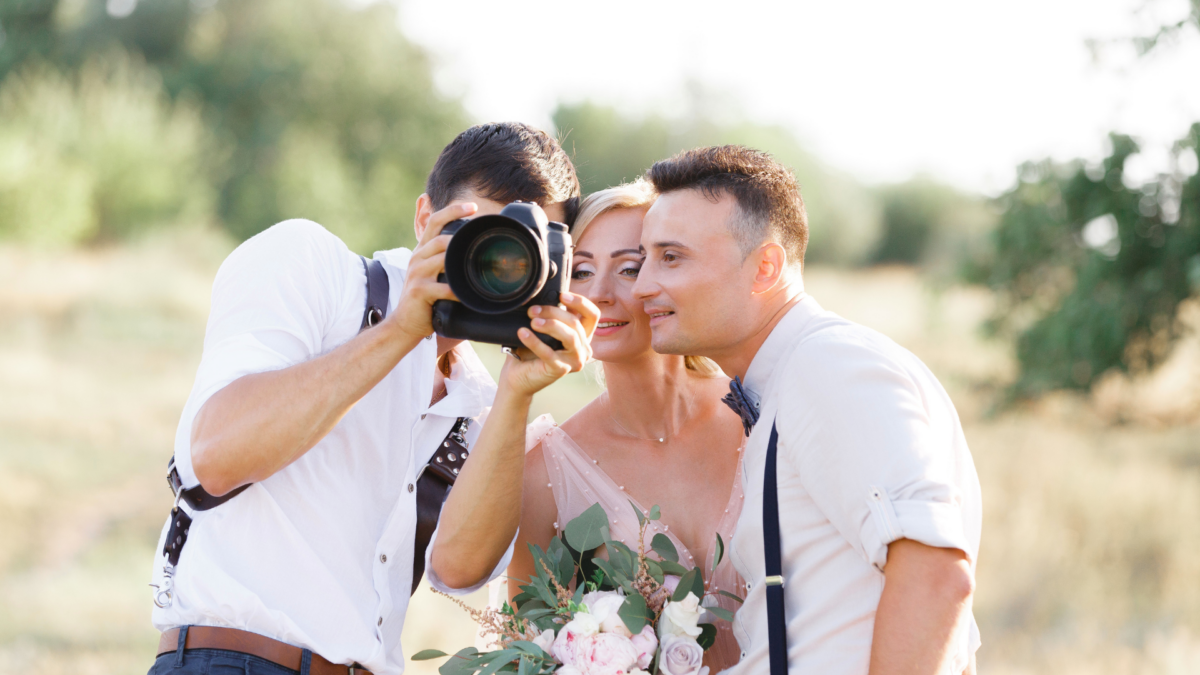
Tips for Handling Client Relations and Communication
Good communication is key to happy clients. Be clear about what you offer and listen to their needs.
- Respond quickly to messages and calls. Set expectations about timelines and deliverables upfront.
- During shoots, give clear directions and stay positive.
- After, follow up to make sure clients are satisfied. Ask for feedback and testimonials.
- Building rapport leads to repeat business and referrals. Remember names and important details about clients.
- Send holiday cards or small gifts to your best customers. They’ll always remember small gestures and will keep booking you.
- Reach out to potential clients directly.
- When you land jobs, use clear contracts. Spell out exactly what you’ll deliver and when. Always include your payment terms and policies for changes or cancellations.
How to Plan for Long-Term Stability as a Photographer
Think beyond your next booking. Be proactive by setting aside money for taxes and slow periods.
Invest in quality gear that will last.
Diversify your income streams. Offer prints, stock photos, or workshops. Look into teaching photography classes to those who don’t know much about it.
Stay current with new techniques and technology. Budget for ongoing education and equipment upgrades. Set up some form of savings early, even if it’s just a small amount at first.
How Long Does It Usually Take to See Some Success as a New Photographer
Most new photographers need 1-3 years to build a stable base. The first year is often slow as you build your portfolio and network.
By year two, you should have repeat clients and steady bookings. Many photographers start to feel established by year three. Success varies based on your niche, location, and effort.
Wedding photographers may book up faster than those in more niche fields.
But if you truly love photography, don’t worry about the timeline. It’s not a race. Keep shooting, asking who needs a photographer, and you’ll be okay.
The goal is to continue learning and improving your craft. Be patient and persistent. Each job is a chance to grow your skills and reputation.
Specializing in Photography Genres
Pro photographers often focus on specific types of photos. This lets them become experts in their chosen areas and build a strong reputation.

Portrait Photography Insights
Taking great portraits is all about connecting with people.
You’ll need to make your subjects feel at ease so their real personalities shine through.
Good lighting is always the goal. Learn to use natural light or studio setups to flatter faces. Pay attention to small details like hair and clothing.
Posing is also an art, so practice guiding people into natural-looking positions.
Portrait work can include headshots for actors and professionals, family photos, or artistic character studies.
Each type needs a slightly different approach. As you gain experience, you’ll develop your own style that clients love.
Capturing the Beauty of Weddings
Wedding photography is fast-paced and high-pressure. You only get one shot to capture those special moments. It’s a mix of portraits, candids, and detail shots.
You’ll need to be organized and able to wrangle large groups for family photos. A second shooter often helps cover everything.
Editing skills are important to create a cohesive look for the whole set of images.
Wedding photographers usually offer packages with engagement shoots and albums. Building relationships with other vendors can lead to more bookings.
This genre can be very rewarding as you document one of the happiest days in people’s lives.
Adventures in Landscape Photography
Landscape photography lets you explore beautiful places and capture nature’s wonders.
You’ll often work in challenging conditions and odd hours to get the perfect light. Patience is needed as you wait for the right moment.
A good tripod is essential for sharp images, especially in low light. Post-processing skills help bring out the best in your raw files.
Some landscape photographers sell prints or stock photos. Others lead workshops or photo tours.
It’s a competitive field, but there’s always room for fresh perspectives on the world’s beauty.
Why You Should Specialize as a Pro Photographer
Picking a specialty helps you stand out in a crowded market. You become known as the go-to person for a certain type of photography. This makes it easier to market yourself and charge higher rates.
Specializing lets you focus your gear and skills on one area.
Solving the same types of creative problems repeatedly will improve you faster. Clients appreciate working with an expert who knows their niche.
Some photographers worry about limiting themselves. But you can always branch out later.
Many pros have a main specialty, plus a few other areas they enjoy. The key is building a strong foundation in one genre first.
Growing Through Ups and Downs as a Professional Photographer
Being a professional photographer means dealing with both good and bad times. You’ll face challenges, but you’ll also find chances to grow and improve your skills.

Learning from Professional Success Stories
Look at other photographers who’ve made it big. Their journeys can teach you a lot.
Many started small and worked their way up. They often tried new things and took risks.
Some famous photographers began by doing free work. This helped them build a portfolio and make connections.
Others found success by focusing on a specific type of photography, like weddings or nature shots.
Overcoming Industry Challenges
The photo world can be tough. You might face stiff competition or struggle to find steady work. Don’t let these bumps in the road stop you.
Try new techniques or learn to use editing software better.
Every photographer will experience a dry season when bookings are very scarce. This is why it’s important to keep a close relationship with each of your clients. Saving their emails and phone numbers in a database can come in handy when you want to promote holiday photoshoots or a new color backdrop.
Bad reviews can hurt, but use them to get better.
Ask clients for honest feedback and make changes based on what they say.
Adapting to Market Trends and Changes
The photo world is always changing. New tech and styles pop up all the time. Stay on top of these shifts to keep your work fresh.
Keep an eye on popular photo styles on social media. Try them out in your own way.
But don’t forget your unique style – that’s what makes you stand out.
Learn new skills that clients want. Maybe it’s drone photography or video work. Adding these to your offerings can bring in more business.
Stay flexible with your services. If in-person shoots aren’t possible, try offering virtual sessions. Be ready to change your plans when needed.
Wrapping Up What It Means to Be a Professional Photographer
Being a pro photographer is about more than just taking nice pictures. You need top-notch skills with your camera and editing software.
Running a photography business means wearing many hats. In addition to the creative work, you’ll handle marketing, finances, and customer service.
Flexibility is crucial. You might work long or odd hours to get the perfect shot. Adapting to different clients and situations is part of the job.
Passion drives many photographers. And if you love what you do, it shines through in your work. This can help set you apart in a competitive field.
But remember, it takes time to establish yourself.
Be patient and persistent as you build your career. With hard work and dedication, you can turn your love of photography into a rewarding profession.

